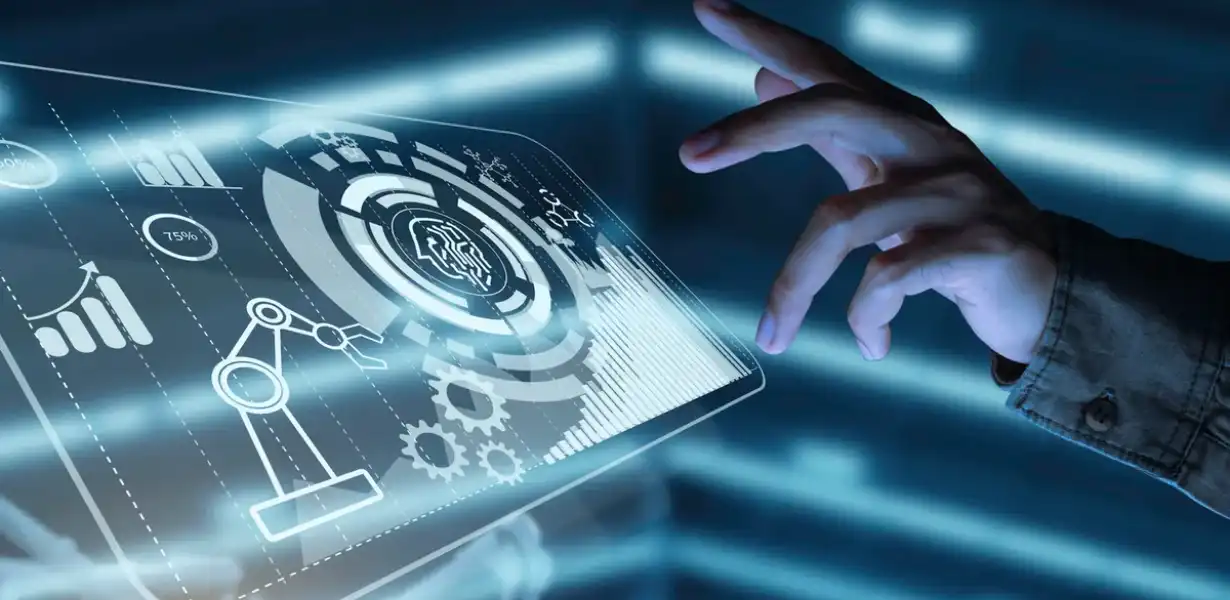
Touchless Touch Gestures: The Next Leap in AI-Powered Gesture Recognition
- Post
- August 7, 2023
- Mobile & Responsive, Touch Gestures, Web Design
- 0 Comments
Gesture recognition has come a long way, and touchless touch gestures represent the pinnacle of this advancement. Imagine controlling your devices and appliances effortlessly with a mere wave of your hand or the movement of your fingers. This is not science fiction; it’s a reality powered by artificial intelligence. In this blog, we will explore the evolution, functionalities, and potential use cases of touchless touch gestures.
Evolution of Gesture Recognition
Gesture recognition has been a part of human communication since time immemorial. From simple hand gestures to complex body language, humans have used non-verbal cues to convey thoughts and emotions. With the advent of technology, researchers and scientists began exploring ways to translate these gestures into machine-readable commands.
Early attempts at gesture recognition involved using cameras to track hand movements, but they were often limited by processing power and accuracy. However, with the rise of AI and machine learning, gesture recognition technology took a quantum leap forward.
The Power of AI in Gesture Recognition
AI plays a pivotal role in touchless touch gestures. It enables devices to understand and interpret human gestures accurately. Machine learning algorithms analyze vast amounts of data to recognize patterns and refine their gesture recognition capabilities over time. The more data they process, the more accurate and responsive they become.
How Touchless Touch Gestures Work
Touchless touch gesture systems use a combination of cameras, sensors, and AI algorithms to interpret hand and body movements. These systems capture the gestures, analyze them in real-time, and translate them into specific commands for devices to execute. The technology can differentiate between various gestures, making interactions more intuitive and seamless.
Touchless Touch Gestures in Smartphones
Smartphone manufacturers have embraced touchless touch gestures as a way to enhance user experiences. With touch gestures, users can perform tasks without physically touching the screen. For example:
Answering calls with a simple hand wave.
Scrolling through web pages or emails with a flick of the wrist.
Silencing incoming calls or alarms by hovering the hand over the device.
Touchless Touch Gestures in Automotive Industry
The automotive industry has also embraced touchless touch gestures to improve driver safety and convenience. Gesture recognition technology is integrated into infotainment systems, allowing drivers to control various functions without taking their eyes off the road. For example:
Adjusting volume or changing music tracks with a hand gesture.
Answering or rejecting calls with a wave of the hand.
Navigating through the GPS system with simple hand movements.
Touchless Touch Gestures in Healthcare
In the healthcare sector, touchless touch gestures offer a hygienic way to interact with medical equipment and devices. Medical professionals can control machines and access patient data without physical contact. This reduces the risk of cross-contamination and improves overall hygiene standards.
The Challenges and Future of Touchless Touch Gestures
While touchless touch gestures hold immense potential, there are still some challenges to overcome. These include:
Ensuring high accuracy and responsiveness to avoid misinterpretation of gestures.
Addressing privacy concerns related to cameras and sensors capturing user movements.
Making touchless touch gestures accessible to people with disabilities.
Despite these challenges, the future of touchless touch gestures looks promising. As AI technology continues to advance, we can expect even more sophisticated gesture recognition systems with broader applications in various industries.
Final Words
Touchless touch gestures are no longer confined to the realm of sci-fi movies; they are now an integral part of our technological landscape. As AI-powered gesture recognition continues to evolve, we can expect even more exciting innovations that will reshape how we interact with the digital world. From smartphones to cars and healthcare devices, touchless touch gestures hold the key to a safer, more intuitive, and seamless future.
Commonly Asked Questions
Q1. What are touchless touch gestures?
Touchless touch gestures are hand and body movements that can be interpreted by AI-powered systems to control devices and machines without physical contact.
Q2. How does AI play a role in touchless touch gestures?
AI algorithms process data from cameras and sensors to recognize and interpret human gestures accurately, making touchless touch interactions possible.
Q3. Where are touchless touch gestures used?
Touchless touch gestures are used in smartphones, automotive infotainment systems, healthcare devices, and various other industries to improve user experiences and hygiene standards.
Q4. Are touchless touch gestures accessible to everyone?
Efforts are being made to make touchless touch gestures accessible to all users, including people with disabilities, to ensure inclusivity.
Q5. What does the future hold for touchless touch gestures?
The future of touchless touch gestures is promising, with advancements in AI technology expected to lead to more sophisticated and widespread applications in the coming years.




